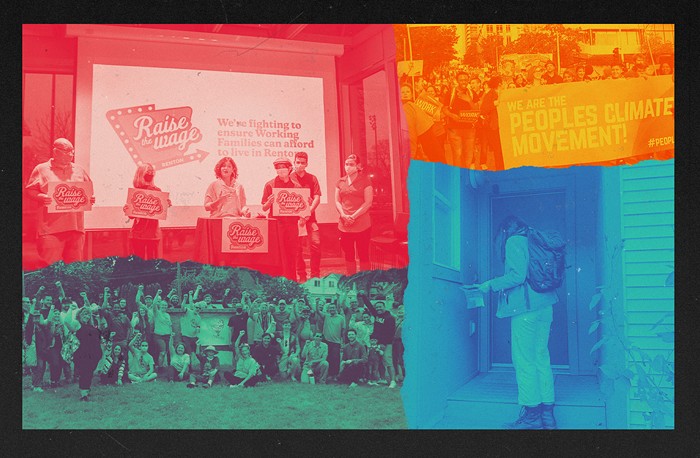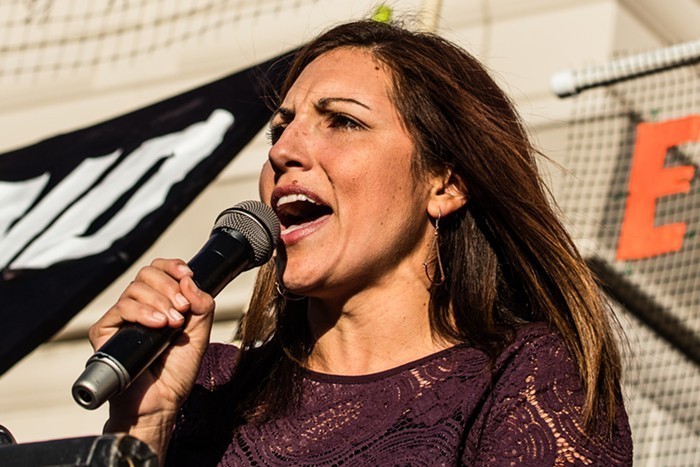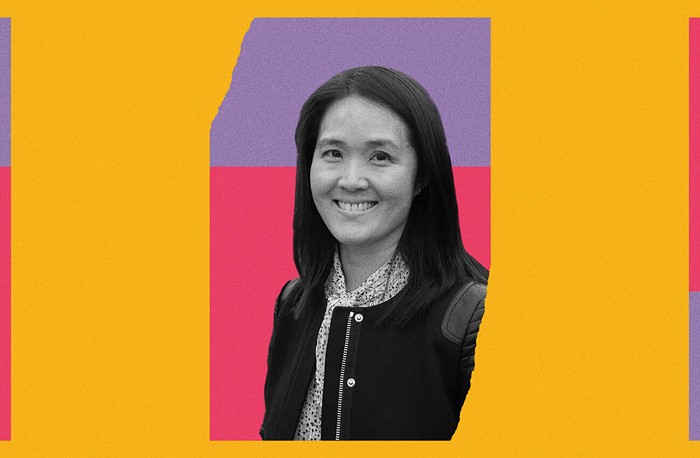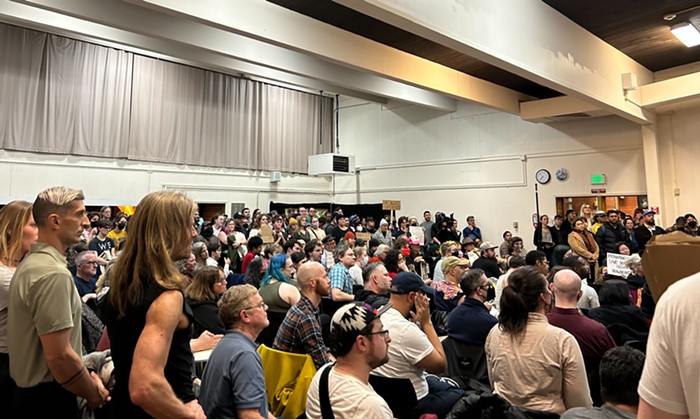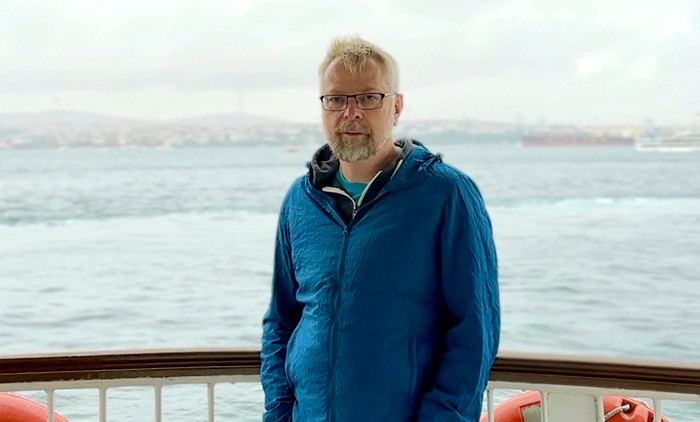I bought a bag of marijuana today at Cannabis City, Seattle's first legal retail pot store, just after they opened at noon. (Surprisingly for a pot store, they opened on time.) It was a different experience from every other time I've bought pot—and I've bought a lot of pot before—not just because there were dozens of TV crews swarming outside. What legalization provides, prohibition never could: explicit certainty about what I purchased, what it contains, what it doesn't contain, where it came from, where the money goes, and the promise that every time I purchase this product it will be essentially the same.
Here's the excellent pot, the bag, a receipt, and a very detailed label:

- DH
- CLICK TO EMBIGGEN $40 gets you two grams of pot and more information about your stash than you've ever had before.
Consumers will decide whether all that certainty is worth the price; the two-gram bag was $40, including $10 in tax, which is generally higher than street prices.
Some people already say it's not worth it. Standing beyond the media frenzy was John Stuart, 24, who was wearing a pair of pot-leaf-print shorts and a Marilyn Manson t-shirt. His friend had a white pit bull on a rope. Were they waiting to buy pot inside? "No, because I got a medical-marijuana card and it's way too expensive at Cannabis City," said Stuart. "You could go to Westlake Park and get it for $10 a gram. That's a lot cheaper than going to the store."
But the pot Stuart can buy in a dispensary or in a park will never be like this. The glut of information on that label represents something between government overreach and a pot-lover's dream come true.
The largest typeface on the label details the precise composition of the drug. This strain is called OG's Pearl, which contains exactly 21.5 percent THC (the predominant set of psychoactive chemicals in cannabis). The label then lists the CBD, a more narcotic chemical found in marijuana, and the nonpsychoactive CBG. The label goes on: These buds are 80 percent indica-type cannabis (as opposed to the more stimulating sativa, which presumably makes up the other 20 percent). It lists the moisture content (6.25 percent), the day it was harvested (June 2), the day it was tested (June 23), where it was grown (Kitsap County), how it was grown (indoors), and who grew it (Nine Point Growth Industries).
If I like this product, I can buy it again and it will reliably be the same thing. If the product changes—how or where it's grown, whether there are shifts in chemical composition at the next harvest—it will be right there on the label.
This chunk of vegetation, like all the pot legally sold in Washington, was tracked from the time it was a baby clone to a full-grown plant, then tracked from harvest and into this package. And because it's so closely tracked, consumers have unprecedented certainty that it's not tainted with contaminants (other drugs, sketchy fertilizers, tobacco juice, mold, soap, etc.).
It's also a guaranteed weight—you're not going to get shorted on your deal—and you know your money is paying for legit, in-state jobs, not funding some murderous interstate cartel.
But if Mr. Stuart buys pot in the park, it's all but certain he'll have no idea what he's really getting (or where his money goes). Even dispensaries will lie through their teeth about what they're selling—I know because it was once my job to tell that lie.
In my 20s, I worked briefly as an assistant manager in a marijuana dispensary in California. Each morning, growers would deliver massive sacks of weed to the back door, and we'd haul them to an upstairs office for inventory purposes. It turns out, one of my jobs there was to name the strains. People talk a lot about pot strains like they're of hallowed pedigree, and some of them are legit examples of growers developing a unique variety (classics like White Widow or Blueberry, or newer strains like Jack Herer). But a lot of strain names? They're totally fabricated. There's always pothead lore about how one strain is stronger, how it makes you happy, how it's got a "really mellow vibe," or it's "good for sleep." But most of that is bullcrap. At the dispensary I worked for, part of my job was to fabricate names as a marketing ploy. I'd just make 'em up. I called them Einstein, Alligator, Beethoven, Plato—any name I'd think could sell. And if the name was marketable and we'd run out of that type of pot? We'd find another type of pot and call it the same name. Long story short: Under prohibition, the name's meaningless. The place you bought it didn't guarantee its provenance. You never knew what you were getting from one bag to the next.
With the standards we have in Washington, we don't have punk-ass kids (like me) making up stuff about your weed and you don't have to guess what you're smoking. The question is: Do we have enough legal pot to keep this system running?

- DH
- ALISON HOLCOMB: Beaming for bud.
But she added that the stores we have are better than what she expected. "When we drafted the initiative [in 2011], we were thinking of the state-run liquor stores," said Holcomb. But unlike the austere state booze outlets, which were nixed by voters, the Cannabis City showroom has hardwood floors, wooden paneling, and illuminated display cases. "This is warmer and more inviting than what we envisioned," said Holcomb. (It's also a helluva lot nicer than buying pot in an alley or at some chatty dealer's apartment.)
Cannabis City owner James Lathrop was beside himself with self-satisfaction. "I declare this war over," he told the crowd. (Good for him, but tell that to people in the other 48 states.)
However, Lathrop, Holcomb, and others also provided something with legal pot you'll never see from a street dealer: a level-headed warning in writing.
Every customer was handed an informational "consumer's guide" pamphlet with "what you should know" about pot use in a Washington State. It warns about the potency of edibles (which aren't in stores yet), the law about driving stoned (don't do it), and the rules about where you can consume it (in private places, but not in hotels that ban smoking).
That pamphlet—free of fear-mongering—represents a tiny but critical revolution in drug education: It's produced by the Washington State Liquor Control Board, a state agency, but it's sponsored by and features the logos of the ACLU, the National Organization for the Reform of Marijuana Laws, and the Marijuana Business Association. This pamphlet is evidence of government critics co-opting government.
This is the end of "Just Say No" in our state. That was an era of the government lying about the harms of pot and promising you that one toke led to a lifetime of addiction, while pro-pot forces generally exaggerated the benefits and downplayed the risks. More and more, both sides are settling on the facts and providing all the information—sometimes more than you know what to do with, right on the label—for users make up their own minds. You know you're buying local.
So if it costs a few bucks more per gram, it's worth it.
